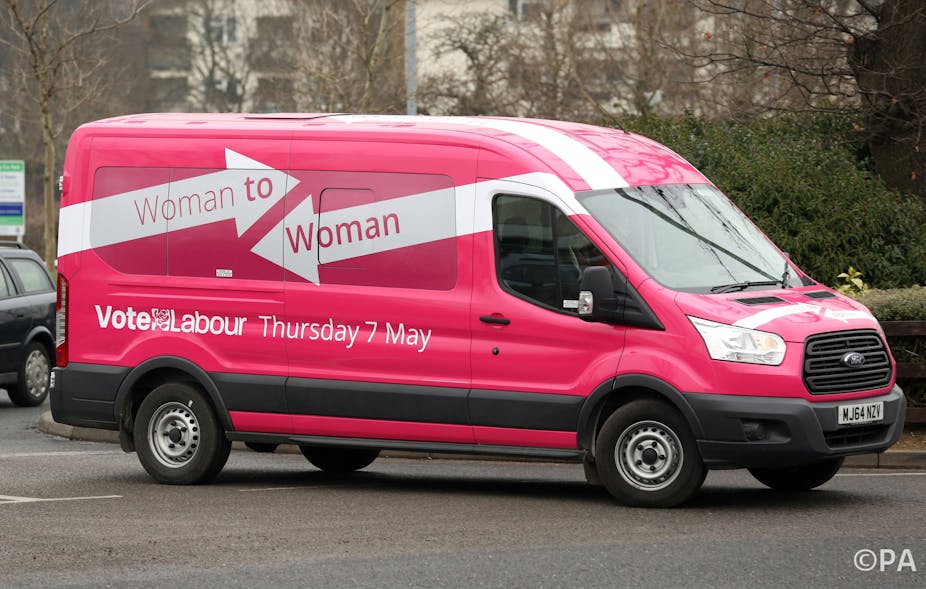An admission: last year I wore a bubblegum pink t-shirt. The occasion? Cancer Research’s Race for Life. If I told you that I only ever wear black and grey, you might be rather surprised. Indeed, I have publicly advocated the banning of pink clothes for girls as one of my “feminist wishes” – and only partly in jest.
Yet for one day, being part of a group – signalling that I was one of thousands of British women running in a women-only race – was worth, in my view, the sartorial horror of Barbie pink. Pink is a colour that so often reinforces the idea that what is pink is what is for girls – pink biros, pink razors, pink fairy dresses. It’s a colour that all too frequently constrains opportunities for girls and boys to be merely children.
Just as I put on my pink t-shirt, I have decided not to get cross when I see the advert for the HPV vaccine. It features a series of bright pink shoes, starting with a sparkly pair for a little girl, then some teenaged-size Converse and finally some pink high heels. The message is you can’t stop your daughter growing up, but you can protect her from cervical cancer. When I catch a glimpse of it on the tube I tell myself is that the message in this case is more important than the medium.
And so I will defend Labour’s decision to put a pink campaign bus on the road with deputy leader Harriet Harman.
Democratic deficit
In the run-up to the 2010 general election, it initially looked as though women and women’s concerns would play a central role. But as the campaign unfolded, we were marginalised. The leader’s debates were all-male and women MPs were hardly seen or heard – although the wives and their outfits did get plenty of media copy. Child care, maternity and paternity leave and violence against women all made it into the party manifestos but they got lost as the “big issues” of the day took over.
There is a clear democratic deficit in British politics when it comes to gender and that needs to be addressed. Women make up less than a quarter of the House of Commons and even fewer of them are mothers.
The boorish willy-jousting that is Prime Ministers’ Questions says almost everything that needs to be said about the highly masculinised institution of Westminster.
Of course, we should not assume that all women think the same thing, care about the same issues, or agree on the same solutions. And happily, there is a market for women’s votes in the UK, unlike in the US, where women are consistently more likely to vote Democratic, meaning that Republican candidates focus their attention elsewhere. Such inter-party competition means that the parties are incentivised to consider women’s perspectives, issues and interests.
And if there is some agreement among the parties about what we might call the “women’s terrain”, political parties are more likely to offer alternative policies on the issues that fall within it.
Over the 2010-2015 parliament, for example, the government has acted on forced marriage, FGM and extended childcare. Labour has recently announced plans to extend paternity leave and higher paternity pay and the coalition has outlined action on revenge porn. It’s reassuring to see the main parties addressing issues that for too long were marginal to the main political agenda. Isn’t this the stuff of politics? It is also the case that many of these issues have been championed by women MPs and ministers, of all political hues.

So it would be a shame if Labour’s effort to reach out to women – particularly to those who may not see themselves as political animals – gets lost in debates about the colour pink. As it tours the UK, the pink bus may very well act as a concrete contact point for women to talk about politics with women politicians. An outcome I’d happily welcome would be buses from all the political parties driving up and down the country doing the same.
There will be those who maintain that pink cannot be reclaimed, or that parties should not tailor their campaigning in this way. But if the price of women’s greater participation this general election is a pink bus, then it’s one I’m willing to pay – at least until party politics and parliament is thoroughly feminised. When women constitute 50% of the House of Commons and when the gendered effects of legislation are fully recognised, only then might I have time to really worry about the colour of a vehicle.

